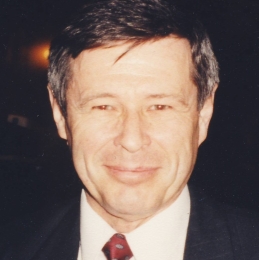Péter Hunya
He graduated from the fourth year of László Kalmár's "school in Szeged" - the Faculty of Natural Sciences (TTK) of the József Attila University (JATE). Between 1964 and 1965, he was an intern at the Bolyai Institute of the JATE TTK, from 1965 he was a scientific associate at the university's Cybernetics Laboratory, and from 1976 he was a senior scientific associate,
From 1979 to 1987 he was the head of the Laboratory (from 1981 the Kalmár László Cybernetics Laboratory - KLKL).
From 1987, he worked as a consultant and scientific director at various computer technology companies, and from 1993, he worked as a senior project manager at UNESCO until his retirement in 2001.
He worked on numerical mathematics, medical-biological applications of computer science and cybernetics methods, modeling of biological systems, mathematical statistics and related software development. He received his doctorate in 1974. In the same year, he received a Hungarian Academy of Sciences award as a member of an inter-institutional, interdisciplinary research group dealing with biological modeling. In 1987, he defended his candidate's thesis on a statistical topic.
From 1974 to 1987, he was a member of the Hungarian and international research groups in the UNESCO 17-country international comparative, 4-round project (ICSOPRU) examining the management, productivity and efficiency of research units and institutions, and was the scientific leader of the Hungarian group in the final round. In 1990, under his leadership and with his participation, the first Hungarian-made CD-ROMs were created and published: the multimedia (containing a text and image database) SAMPLE STAR for scientific purposes and at the same time the International Patent Classification. From 1983, he was a member of the international advisory and development group in the UNESCO statistical software development and dissemination project (IDAMS), and from 1993 (already as an internal employee of UNESCO) he was the director of this project, which drew on experts from more than 10 countries. From 1998 he also supervised the UNESCO database management software system development and dissemination project (CDS/ISIS). From 2001 he was an external technical consultant to the IDAMS project.
He has taught, given courses and lectures outside Europe in Central and South America, the Arab Region, sub-Saharan Africa, South and Central Asia, and several countries in the Far East. He is the author/co-author of more than 50 publications (articles, documentation) in Hungarian and foreign languages. His latest article was published in 2010.
He was a member of the editorial board of Information Electronics, the Presidency of the National Association of Information and Communication Engineers, the organizing committee of numerous conferences and professional meetings, the Computer Technology Coordination Committee of the Szeged Academic Committee (he was also the chairman of the latter), various working and expert groups of the Computer Technology Application Council of the Council for Mutual Economic Assistance (KGST), and the Hungarian UNESCO Committee.
- selected publications
- major projects
- Gábor Péter Szabó, Péter Hunya: The beginnings of computer science education at the University of Szeged (iTF event, 2010.)
- Péter Hunya: JATE Cybernetics Laboratory – 50, Memories from the history of Kiblab (iTF event, 2013.)
Péter Hunya (title page), Révai Új Lexikona, Babits Publishing House, 2002. Volume 10, page 168.
- Married; has two children and five grandchildren. (2020 announcement.)
- Péter Hunya's official name is: Csaba Péter Hunya.
Created: 2020.12.01. 17:07
Last modified: 2020.12.16. 16:39

